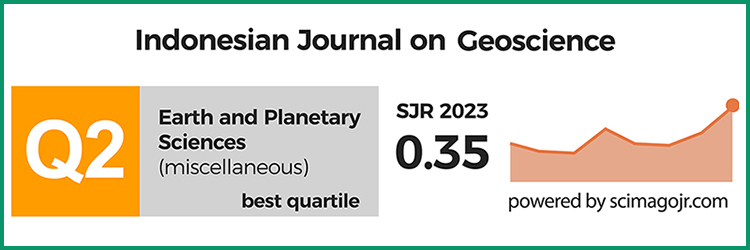The Importance of Reservoir Geomechanic Modelling for Carbon Sequestration, Storage, and Utilization: A Case Study from East Natuna
DOI:
https://doi.org/10.17014/ijog.11.2.269-293Abstract
East Natuna is well known for its huge natural gas reserves with a very high CO2 content. The appearance of CO2 content in an oil and gas field is always considered as waste material, and will severely affect the economic value of the field. The higher the content, the more costly the process, both technically and environmentally. In this research, the newly proposed reservoir management approach called CSSU (Carbon Sequestration, Storage, and Utilization) method is trying to be applied to change the paradigm of CO2 from waste material into economic material. The CSSU method is an integration of geological, geophysical, reservoir engineering, and engineering economics with the determination of technical and economic optimization of the use of CO2 produced as the working fluid in a power generation system that has been conditioned through an injection-production system in geological formations. Reservoir simulation modeling is done by three models, namely: Compositional, Compositional + Geomechanical Coupling, and Compositional + Geomechanical Coupling + Thermal. There is a difference in the the total injection between Compositional + Geomechanical Coupling and ordinary Compositional simulations of 1-2 % due to factors such as Modulus Young, Poisson's Ratio, Angle of Internal Friction, and Biot's Coefficient which affect the reservoir pore volume calculations and the total CO2 fluid injection calculation. The changes in geomechanical parameters will affect the CSSU techno-economic analysis where a 30 % change in the rock compressibility and poisson ratio parameters will effect changes in the electrical energy amounts being produced by 0.01 MW or 0.33 %, and in an economic value of 4 MMUS $ or 2.24 %.



















